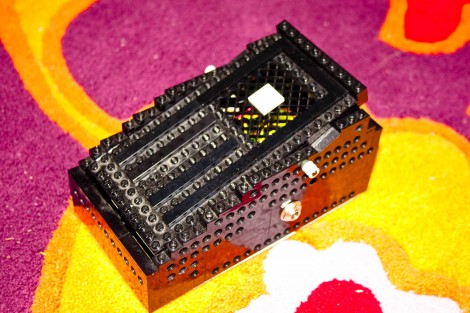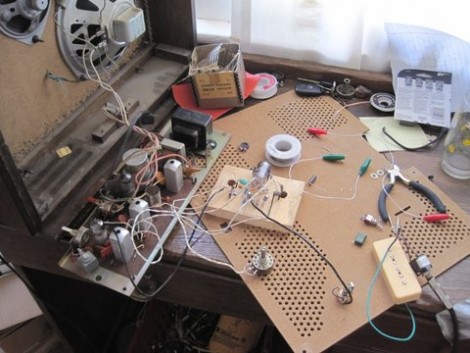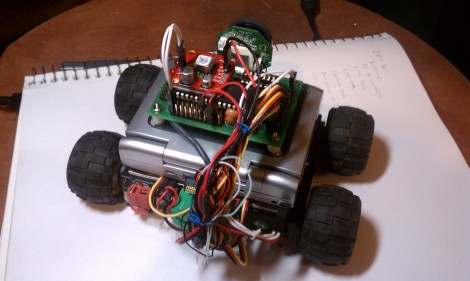
Here’s a guitar wah-wah pedal that [Christian Munk] built. Inside you’ll find a circuit board that he etched and populated based on this design but he chose to build the housing out of LEGO. The video after the break gives you an idea of what it sounds like, but for those who’ve stepped on a LEGO piece with bare feet, his pedal pounding might make you cringe!
To manipulate the sound the pedal rocks forward and backward on a center pivot shown above as a grey “nut” sticking out the side of the frame. Inside there’s a system of LEGO gears that turn a trimpot to alter the sound. This might go along nicely with that guitar amp you hacked together.















